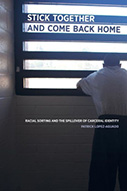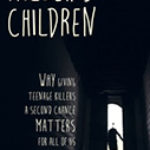Stick Together And Come Back Home: Racial Sorting And The Spillover Of Carceral Identity

Author: Patrick Lopez-Aguado
Publisher: Oakland, CA: University of California Press, 2018. 240p.
Reviewer: Mark S. Fleisher | May 2018
Stick Together offers an interesting presentation of prison folklore. The author reports snippets of narrative stories told by people who were exposed to prison life. Even if the author wants it to, the book does not report what happens in prison. Former prisoners’ narratives about prison life are just stories.
Stick Together creates a folkloric vision of California prisons. Stories about miserable living conditions, violence around every corner, and brutal staff are predicable themes. I wouldn’t expect former prisoners to say they enjoyed lifting weights outdoors. Story tellers won’t mention their first ever dental treatment. Or that chow wasn’t all that bad. Stories reporting the vagaries of doing time are folklore until proven otherwise. Where’s the proof?
Venturing into the real world of prisoners and seeing firsthand the carceral state in vivid action gives researchers details necessary to prove prisons needlessly punish inmates. Researchers can hang around San Quentin’s lower yard among general population inmates. There, they can then verify allegations of staff berating or beating inmates or inter-racial gang intimidation. If inmates report cockroaches in the chow, researchers can sample inmate meals, breakfast, lunch, and dinner. Unless researchers have witnessed the behavior reported in stories, they won’t know if inmates recount their own experiences, or experiences of others, or are simply conjuring stories, gaming researchers with the excitement and dangers of prison life, which, they think, affirms their toughness.
Prison violence stories are core themes in prison folklore. New inmates arrive, nervous, as well they should be, until they walk onto the yard where they meet friends and family from back in the neighborhood. I chatted with an inmate at San Quentin who said he shared a cell with his father. A family reunion, of sorts. A former U.S. Marine (he had a Marine tattoo displayed on left foreman) told me San Quentin isn’t the place it was when he came in, 19 years earlier. Back in the day, he said, inmates killing inmates happened nearly every day. Prison inmates across the country have told me that story. Prison jargon has a term, “Prisney Land,” designating peaceful prisons today that were once plagued by violence. Violence can be verified with incident report records obtained through the Freedom of Information Act, and a review of state and federal litigation.
Stick Together argues that the criminal justice system and U.S. prisons irreparably damage the psyche and social well-being of convicted felons who have killed, robbed, raped, and maimed their neighbors. Research has shown these felons have likely suffered mental health and personality disorders — a consequent of domestic violence. Schools rejected them when they acted out emotional pain lingering from physical and emotional abuse. Ignored in the free world, adolescents whose socially dysfunctional behavior was instigated by violent compulsions turned out to be suitable adult prison inmates.
The author describes prison enculturation as a continuous process of carceralization. And it’s necessary. Prisons are complex organizations. Prison enculturation means learning organizational rules. It takes time to learn the pecking order among correctional staff. Which officers do inmates talk to about a visiting list? Medical care? Feeling threatened? Yes, inmates must learn the intricacies of the inmate social order. Yes, social groups have racial and ethnic social boundaries, just as they did on the street. Violating inmates’ unspoken behavioral rules can be fatal. But, the propensity to kill and inter-racial hatred began well before felons entered the carceral state.
Carceral enculturation starts in high-crime neighborhoods where adolescents’ free-world enculturation exposes them to social groups and violence familiar to prison inmates, including gangs, gang violence, illegal drugs, weapons, and racial and ethnic animosity. Lessons of Prison Life 101 are embedded in street jargon. Kids on the street in violent neighborhoods acquire prison jargon and prison folk tales. The movie American Me exposed youngsters and adults to prison gangs, racial hatred, drug smuggling, killing, and ethnic gang camaraderie. Youngsters who attend school, participate in sports, and go home at night to mom and dad can talk easily about street gangs. They have been steeped in gang folklore integral to neighborhoods’ culture history. Youth gang researchers have acquired gang data by querying middle and high school students.
Prison stories have racist themes. The Supreme Court of the United States (Johnson v. California, 543 U.S. 499) heard the case of Garrison Johnson, an inmate who’d been in the prison system since 1987. He alleged the California Department of Corrections and Rehabilitation’s (CDCR) policy of housing inmates by race and ethnicity for the first 60 days in prison was dehumanizing and racist. CDRC argued it was dangerous to house inmates, without regarding race and ethnicity. The Federal prison system provided evidence that racial integration in federal prisons did not increase violence. The High Court overlooked administrative and managerial distinctions between CDRC and the federal prison system. In the mid-1980s the federal prison system did not operate mega-prisons like Folsom (CDCR Research Report, May 9, 2018, 2,389 inmates) and San Quentin (ibid, 3,677 inmates). Significant organizational differences were overlooked. Internal administrative structure, management style, staff hiring requirements, inmate programming and employment, and staff training programs, among other vital strategies of correctional management, vary widely. If inmate cell assignments by race and ethnicity kept the peace, CDRC satisfied its mission. The Court ruled against CDRC.
Stick Together yells j’accuse at the prison system. The book’s impetus derives from Foucault’s argument that any form of state-driven punishment is unjustified. But, American prisons are here to stay. Carceral power requires a correctional culture emphasizing strict oversight and clearly defined boundaries between staff and inmates. Federal litigation has remedied numerous constitutional violations of inmates’ rights. That’s just a start. Irresponsible prison administrators who fail to implement professional oversight, and lackadaisical managers who encourage an unpleasant, chaotic environment, endanger inmates and staff, and are hidden out of view behind high walls.
Research has shown that prison administrative and managerial malfeasance has been the spark that ignited American prison riots. If awful prison conditions exist, remediation of those problems falls on state government. Legislators ignore prisons, claiming tax payers prefer their money spent on good schools and parks. Cities may enjoy nice parks, but if cities had good schools in poor neighborhoods and improved social services and public health agencies reaching citizens in need, state prisons would have fewer inmates.
Stick Together does offer an interesting depiction of prison folklore. Perhaps the message of this book is: Rehabilitation doesn’t work. Never has. Never will. But we know that. Prisons are the worst places to heal injured men and women who were damaged by their adult caretakers and ignored by social services, discarded by educators, and jammed through foster homes without proper care. State governments’ elected officials have ignored prisons still practicing 19th century correctional culture.
Every book has shortcomings. Stick Together is valuable. Students should read it and learn the intellectual basis of its argument. If we show students how bad prisons can be, perhaps they’ll make better decisions about oversight of public education, public health, and foster care. We, American society, ignored the 1.5 million people now in prison, when they were unable to help themselves. Poverty is not a pipeline to prison. There’s a long way to go between low-income poverty and a felony conviction. Stick Together has a message: We cannot allow racism to dominate federal, state, and local politics. We must learn how to share America’s wealth. Education, for everyone, is our most valuable commodity and our most effective mode of long-term crime prevention.
References
Irwin, J., & Cressey, D. R. (1962). Thieves, Convicts and the Inmate Culture. Social Problems, 10(2), 142-155.
Johnson v. California, 543 U.S. 499 (2005)
Mark S. Fleisher, Research Professor, Mandel School of Applied Social Sciences, Begun Center for Violence Prevention Research and Education, Jack, Joseph, and Morton Mandel Community Studies Center


